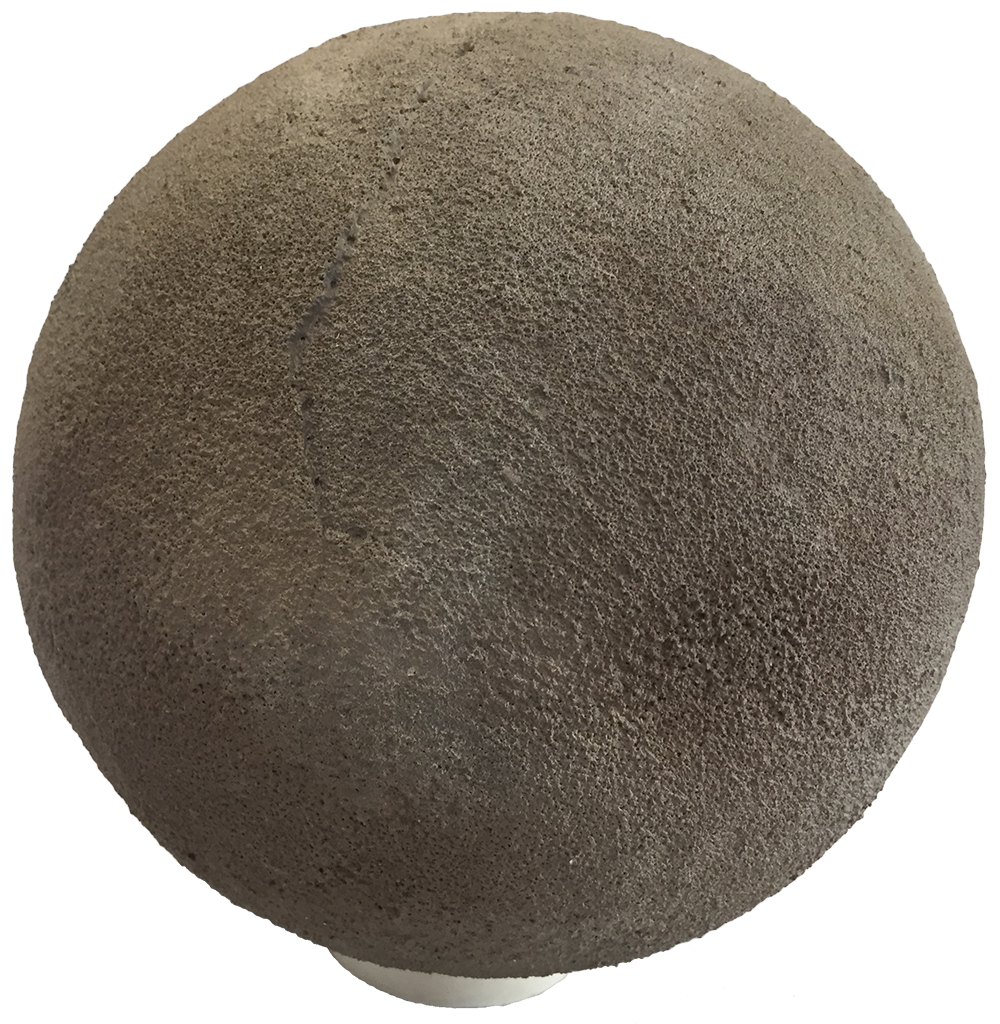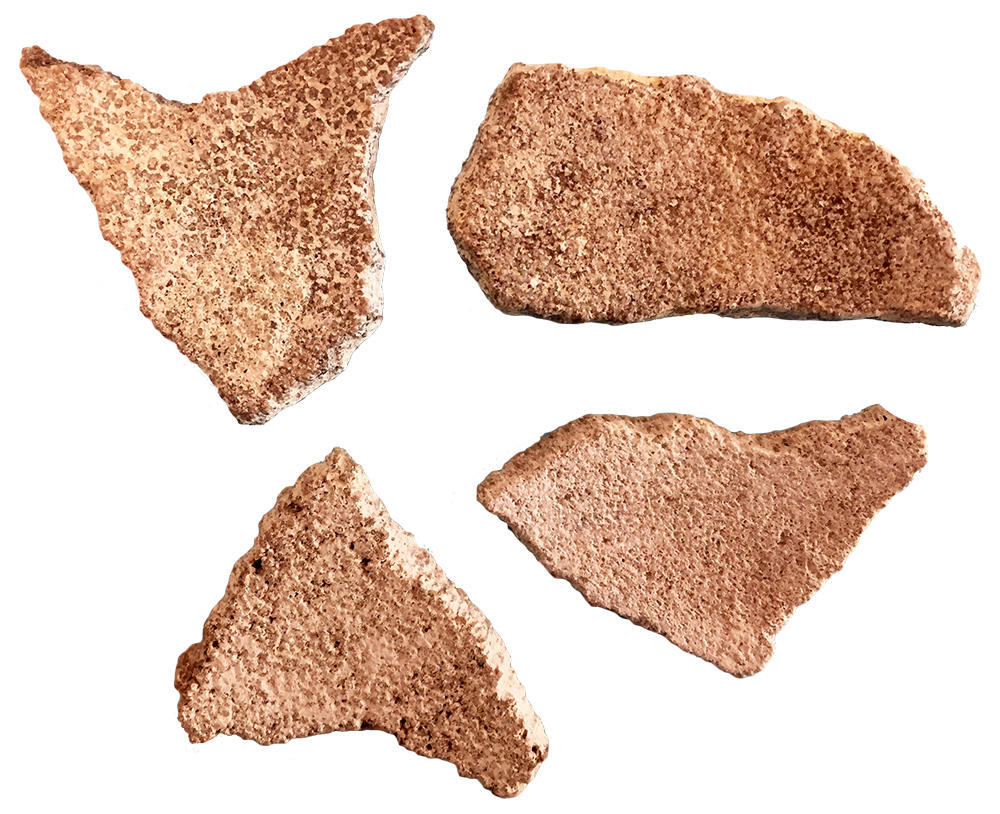
While the largest adult sauropods may have weighed up to 50 tons, they started life as small hatchlings. This may reflect a practical limit on egg size. Large eggshells must be thicker to maintain their integrity, but if they become too thick, embryos cannot hatch. The cabinet’s complete egg is a cast, but the small eggshell fragments next to it are actual fossil material from similar eggs. Those fragments reveal how thick the eggshell was. Both the original egg and the shell fragments came from Cretaceous rocks in Argentina. The egg’s spherical shape reflects the mother’s immense size. While smaller theropod dinosaurs laid elliptical eggs that were easier to pass through their thin streamlined bodies, sauropod mothers were large enough that egg diameter was not a consideration. However, since the minerals of the eggshell material came from the mother’s bones, the total eggshell volume still mattered, especially as a single clutch might include a dozen or a score of eggs. As spherical eggs provide the largest internal egg volume per mass of eggshell material used, most sauropod eggs had spherical shapes to minimize bone mineral loss.
While many dinosaur lines laid their eggs in remarkably bird-like fashion, using colonial nesting sites repeatedly over time, feeding their young in nests after hatching, and even brooding their eggs as most modern birds do, sauropods were so large that they had to follow a different pattern. Far too immense to brood their eggs, sauropods instead heaped vegetation over their nests so heat produced by decaying plant material incubated their eggs. However, in at least one site in Argentina, Sanagasta Geologic Park, sauropod mothers instead relied on natural geothermal energy to incubate their eggs, cleverly making their nesting sites in areas with high natural geothermal flow.
Daily growth bands in dinosaur embryo teeth suggest hatching times of 3 to 6 months, twice that of most birds. This may have made non-avian dinosaurs more vulnerable during times of environmental crisis. Especially as hatching from eggs meant large dinosaurs could inhabit several environmental niches over the course of their lives, utilizing resources that in a mammalian community would be used by different species. Hence the combination of large size and egg laying might have decreased non-avian dinosaurs’ overall biodiversity, which would make them more vulnerable during a mass extinction.
Sauropod eggs were the first known dinosaur eggs, originally found by Jean-Jacque Pouech in the Provence region of France in 1859 but only identified as being from dinosaurs by Paul Gervais in 1877. Still, that was nearly a half century before Roy Chapman Andrews’ 1923 Mongolian expedition famously brought dinosaur eggs to the public’s attention.
